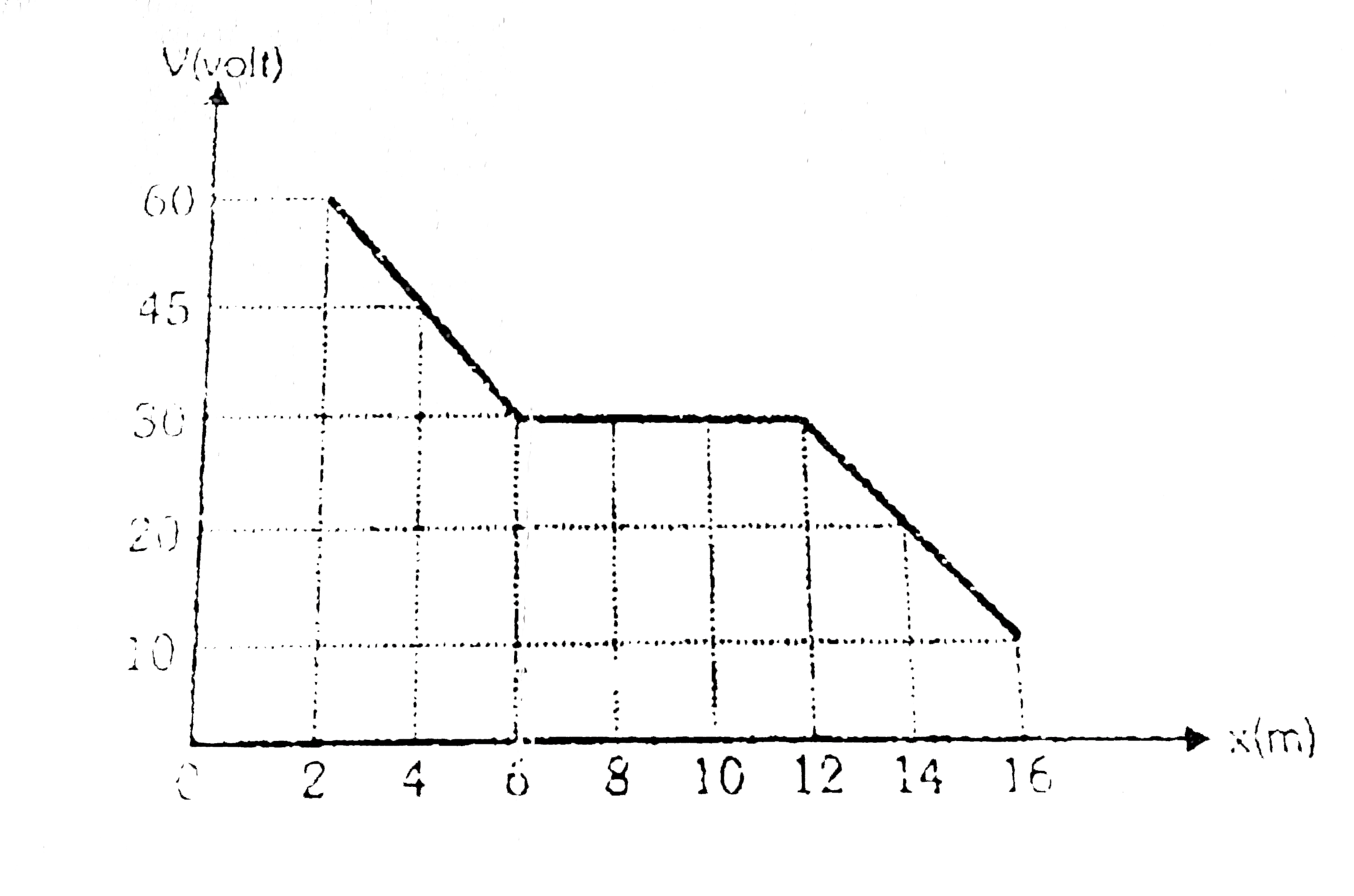In a certain region of space, variation of potential with distance from origin as we move along x-axis is given by V=8x2+2, where x is the x-coordinate of a point in space. The magnitude of electric field at a point ( -4,0) is
−16 V/m
16 V/m
−64 V/m
64 V/m
The correct Answer is:D
To find the magnitude of the electric field at the point (-4, 0) given the potential function V=8x2+2, we can follow these steps:
Step 1: Understand the relationship between electric field and potential
The electric field E is related to the electric potential V by the equation:
E=−dVdx
This means that the electric field is the negative gradient (or derivative) of the electric potential with respect to position.
Step 2: Differentiate the potential function
Given the potential function:
V=8x2+2
we need to differentiate this with respect to x:
dVdx=ddx(8x2+2)
Using the power rule for differentiation:
dVdx=16x+0=16x
Step 3: Calculate the electric field
Now, substituting the derivative into the equation for the electric field:
E=−dVdx=−16x
Step 4: Substitute the x-coordinate of the point
We need to find the electric field at the point (-4, 0). Thus, we substitute x=−4:
E=−16(−4)=64V/m
Step 5: State the magnitude of the electric field
The magnitude of the electric field at the point (-4, 0) is:
|E|=64V/m
Final Answer
The magnitude of the electric field at the point (-4, 0) is 64 V/m.
---
The electric field E is related to the electric potential V by the equation:
E=−dVdx
This means that the electric field is the negative gradient (or derivative) of the electric potential with respect to position.
Given the potential function:
V=8x2+2
we need to differentiate this with respect to x:
dVdx=ddx(8x2+2)
Using the power rule for differentiation:
dVdx=16x+0=16x
Now, substituting the derivative into the equation for the electric field:
E=−dVdx=−16x
We need to find the electric field at the point (-4, 0). Thus, we substitute x=−4:
E=−16(−4)=64V/m
The magnitude of the electric field at the point (-4, 0) is:
|E|=64V/m
The magnitude of the electric field at the point (-4, 0) is 64 V/m.
Topper's Solved these Questions
- ELECTROSTATIC POTENTIAL AND CAPACITANCE BOOK - AAKASH INSTITUTE ENGLISHCHAPTER - ELECTROSTATIC POTENTIAL AND CAPACITANCE EXERCISE - ASSIGNMENT SECTION - C
53 Videos
- ELECTROSTATIC POTENTIAL AND CAPACITANCE BOOK - AAKASH INSTITUTE ENGLISHCHAPTER - ELECTROSTATIC POTENTIAL AND CAPACITANCE EXERCISE - ASSIGNMENT SECTION - D
9 Videos
- ELECTROSTATIC POTENTIAL AND CAPACITANCE BOOK - AAKASH INSTITUTE ENGLISHCHAPTER - ELECTROSTATIC POTENTIAL AND CAPACITANCE EXERCISE - ASSIGNMENT SECTION - A
44 Videos
- ELECTROMAGNETIC WAVESBOOK - AAKASH INSTITUTE ENGLISHCHAPTER - ELECTROMAGNETIC WAVESEXERCISE - ASSIGNMENT SECTION - D Assertion-Reason Type Questions
25 Videos
- GRAVITATION BOOK - AAKASH INSTITUTE ENGLISHCHAPTER - GRAVITATION EXERCISE - ASSIGNMENT SECTION - D (ASSERTION-REASON TYPE QUESTIONS)
15 Videos
Similar Questions
The potential of the electric field produced by point charge at any point (x, y, z) is given by V=3x2+5 , where x ,y are in are in metres and V is in volts. The intensity of the electric field at (-2,1,0) is :
View SolutionThe potential at any point is given by V=x(y2−4x2). Calculate the cartesian components of the electric field at the point.
View SolutionWe know that electric field (E ) at any point in space can be calculated using the relation
→E=−δVδxˆi−δVδyˆj−δVδzˆk

if we know the variation of potential (V) at that point. Now let the electric potential in volt along the x-axis vary as V=2x2, where x is in meter. Its variation is as shown in figure
Draw the variation of electric field (E ) along the x-axis.
View SolutionThe variation of potential with distance x from a fixed point is shown in figure. Find the magnitude of the electric field (in V/m) at x=13m.

View SolutionIn a certain region of space, the electric potential is V(x,y,z)=Axy−Bx2+Cy, where A, B and C are positive constants.
(a) Calculate the x, y and z- components of the electric field.
(b) At which points is the electric field equal to zero?
View SolutionThe speed v of a particle moving along a straight line is given by a+bv2=x2 where x is its distance from the origin. The acceleration of the particle is
View SolutionIn a certain region of space, the electric field is zero. From this, we can conclude that the electric potential in this region is:
View SolutionIf on the x - axis electric potential decreases uniform from 60 V to 20 V between x = -2 m to x = +2 m then the magnitude of electric field at the origin
View SolutionThe electric potential V is given as a function of distance x (metre) by V=(6x2+10x−9) volt. Find magnitude of electric field (in V/m) at x= 4.
View SolutionThe electrostatic potential V at any point (x, y, z) in space is given by V=4x2
View Solution
